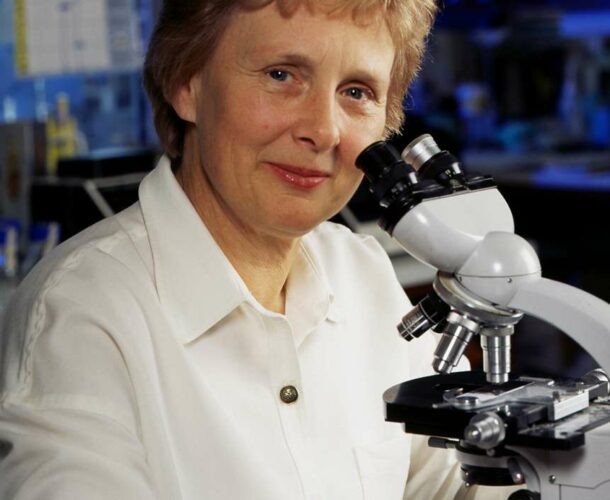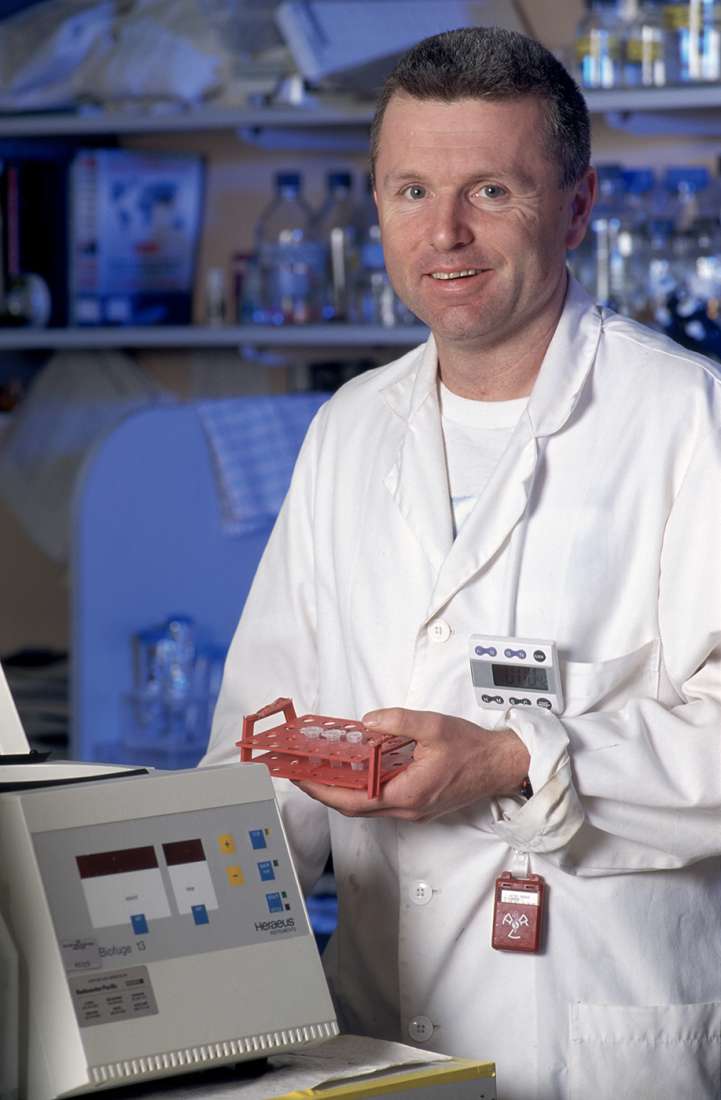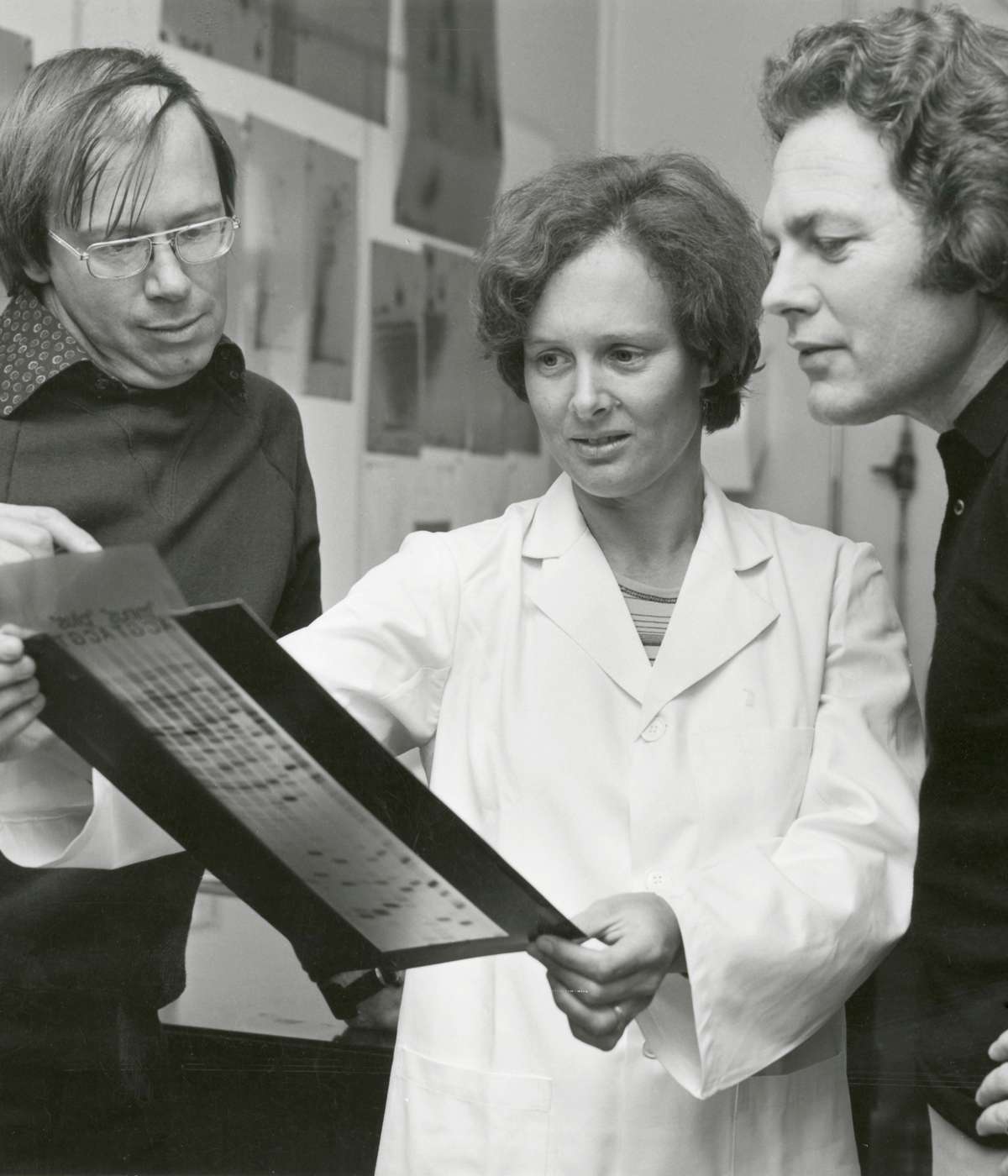Professor Suzanne Cory becomes the institute’s fifth director (1996-2009), following Sir Gustav Nossal’s retirement.
Cory is an eminent molecular biologist with a record of significant achievements in immunology and cancer research.
As director, she energetically promotes science policy and research at national and international levels, embraces new disciplines including bioinformatics and structural biology, and is instrumental in securing funding for the $185 million redevelopment of the Parkville building.
Suzanne Cory takes the helm
In 1996 Cory was invited to succeed Nossal as director of the institute. He was a dauntingly tough act to follow, but she stepped up “because I felt that by taking on this responsibility I could pay back the huge debt I owed the institute for enabling me to fulfill my scientific dreams here, in Australia, where my heart is”.
Taking the helm in another era of spiraling discovery, change was inevitable. Cory determined to emulate her predecessor’s vision, and to preserve the cultural values his long leadership had instilled. “Gus had built an atmosphere where people enjoyed each other’s company and ideas, they liked collaborating, they were used to sharing technologies, they gravitated to the frontiers of their fields. These are attitudes that come naturally to institute scientists, but are so different to those you find in many other places.”
Preserving this esprit de corps was a challenge at a time when Cory also felt compelled to implement modernising structural changes and a program of dramatic expansion, in terms of both people and in physical space. Staff almost doubled in her 13-year tenure to more than 600, annual research expenditure almost tripled to more than $60 million, and a $185 million building redevelopment was launched.
New opportunities and challenges
She persuaded her board, investors, and governments that this ambitious growth was imperative to the institute’s survival as an internationally front-ranking player.
“The life sciences were undergoing a revolution, fuelled by genetics and information technology. The Human Genome Project was underway and huge new opportunities and challenges were opening up.” Building on the institute’s strengths Cory kept the focus on four global challenges: cancer, immunity, autoimmunity and infectious diseases, while recruiting to the effort a suite of new disciplines.
“I knew as a contemporary life sciences institute we needed to be strong in bioinformatics and in structural biology.”
So when an old school friend, Berkeley statistician Professor Terry Speed, dropped by, she promptly brought him into the fold to establish what is now “Australia’s finest bioinformatics group”.
And when Canberra and CSIRO ceased funding the Parkville Biomolecular Research Institute – “which was very foolish” – she hired its chief, Peter Colman, and 25 of his team in one day. “I was sad for them because their institute was very good. But it was great for the Walter and Eliza Hall Institute, and as it turned out I think it was great for them too because they became embedded in an environment that kept feeding them big biology problems.”
Fighting for fundamental science
As the costs of doing cutting-edge science have grown exponentially, political engagement with science and long-term vision have diminished, putting more pressure on budgets and feeding the tension of investment in “deep” science versus more immediately deliverable, translational science.
“I always fight for the fundamental science, because it is always at risk,” says Cory. “The public and politicians readily understand translational science and the rationale for investing in it. But there will be no pipeline to industry or the clinic unless we also invest in the well of fundamental knowledge.”
Fred Sanger, the Nobel Prize winning biochemist who became Cory’s hero and role model during her time at Cambridge, “did not develop DNA sequencing because it was going to make lots of money,” she says. “He did it because he wanted to conquer the unknown and understand DNA. But look what his work has led to!”
“What’s important is to keep pushing at the frontiers of knowledge, but at the same time to always be sensitive to any potential applications. If the idea is a good one, you need to take it forward for translation, either as an individual or an institute. This is our obligation to society. It can’t just be left on the table.”







